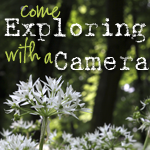 I still have my 35mm (analogue) camera from college. I began using it about 20 years ago. It was a big purchase at the time, my Mother helped me pay for it when I was starting college and needed the camera for the Photography part of Corporate Communications at Centennial College (Warden Woods campus, which is now gone).
I still have my 35mm (analogue) camera from college. I began using it about 20 years ago. It was a big purchase at the time, my Mother helped me pay for it when I was starting college and needed the camera for the Photography part of Corporate Communications at Centennial College (Warden Woods campus, which is now gone).
I can remember the teacher in the class talking about the future of film and photography. Computers were still pretty new then. Most offices had them for word processing but they were many years from being used in every home. The Internet existed, but almost no one knew anything about it. I can remember thinking how great it would be to have a camera which did not need film to be developed. The camera itself had been expensive but it was the cost of developing film and buying more film which was really making it hard to keep from falling behind in the class work.
Even though I have not used that old film camera for many years, I can’t quite let it go. I still have it in the case with the Canadian flag decorated camera strap. I could re-use the old strap for my new bigger digital camera but that just seems so wrong. Like deconstructing an old friend. I did let go of my old photography text book a few years ago. But that is as far as I have gotten to leaving behind the age of film.
What can you do with an old film camera, assuming you get the point where you can let it go?
There are a few people who still use the old film cameras? You could look for them (groups of them) and see if your camera is collectible or worth saving for posterity.
You may find a charity which will take them and be able to find people who will still use them. Or, an artist who wants to work with retro or vintage cameras.
Look for ways to repurpose them. Can parts be salvaged for other projects or for use with your new digital cameras? A repurposed camera could be an interesting steampunk project.
Curating Cuteness: Building an Affordable Camera Collection for the Analog Enthusiast
Toronto Star: A Nerd’s World reclaims beguiling visions of our lives from old cameras
Atomic Vision: The Pleasure of Collecting Old Cameras
Camera Mods – Take a vintage film camera that no longer works and convert it to digital.


 14 Reasons Why Artists Keep Visual Journals.
14 Reasons Why Artists Keep Visual Journals.